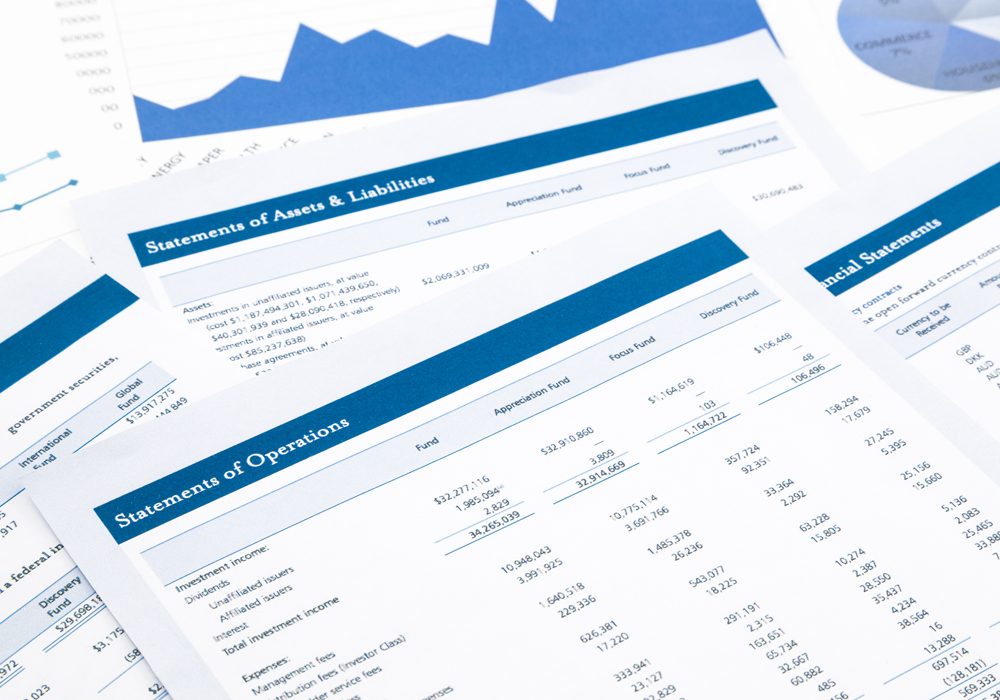Everyone knows that accurate financial information is key to running a successful business. But, when it comes to selling your company – now or in the future – the consistency, completeness, and reliability of your financials can also directly impact your ability to make a deal and get the price that you want.
In this White Paper, TobinLeff partner and ex-Ernst & Young CPA, Chuck Gottschalk, addresses questions like:
- How important are accurate financials?
- What kind of financial information will buyers ask for?
- Besides the top line and the bottom line, what do buyers look for when reviewing financial statements?
- Should I give buyers raw financial data or adjusted financial statements?
- Which financial statements should I show buyers, and when?
Click here for your complimentary copy: TL Preparing Financial Statements White Paper
Preparing Your Financial Statements When Selling Your Company
After you have invested time and effort into starting, operating, and building your business, you may eventually be ready to explore a sale. While preparing to sell, you will reach the point where you need to prepare your financial statements for potential buyers’ analysis. This presentation will differ from the financial statements you have used to operate and manage your business. To maximize the value of your company, you must position your company in the best light.
At some point, potential buyers will engage their own advisors and accountants to assess your financials. Keep in mind that these folks are not your advocates. When these CPAs show up to review your records, they are a bit like IRS auditors who show up to audit a tax return – they are looking for ways to prove that your financial statements are inaccurate and less favorable than you say.
You have probably seen the TV shows where a person buys a home, makes it more valuable, and then “stages” the home for sale to present it in the best light. Effective “staging” results in both a quicker sale and a higher sale price. When selling your company, your presentation of financial results is your opportunity to “stage” your company in the best light. Simply said, clearly organized and reconstructed financial statements will maximize the value of your company in the eyes of potential buyers.
In our combined decades of experience representing both buyers and sellers of firms at TobinLeff, these are the some of the most frequently asked questions we hear regarding financial statements:
- How important are accurate financials?
- What kind of financial information will buyers ask for?
- Should I give buyers raw financial data or adjusted financial statements?
- Besides the top line and the bottom line, what do buyers look for when reviewing financial statements?
- Which financial statements should I show buyers, and when?
How important are accurate financials?
Very. In fact, they’re so important that we’ll be following this White Paper with another one that discusses this question in depth, as well as some common adjustments to make when presenting financials to prospective buyers. For now, suffice to say that if your financial statements aren’t being maintained on a current, detailed, and accurate basis, start fixing that problem today!
What kind of financial information will buyers ask for when selling your company?
When we take a TobinLeff client to market, we create a 12-15 page descriptive/marketing document called a Confidential Information Memorandum (CIM). The CIM – which is only provided to potential buyers after they have signed a binding NDA (Non-Disclosure Agreement) – typically includes the following summary financial information:
- 3 years of historical (and sometimes current year-to-date or full year projected) Revenues and Expenses
- Most recent year-end Balance Sheet
- Adjusted EBITDA (Earnings Before Interest, Taxes, Depreciation, and Amortization) table
- Some discussion of future projections
Normally, we prepare these summaries from the agency’s own internal and/or accountant prepared financial reports.
As the next step with buyers who proceed down the negotiating highway, they typically will ask for your full P&Ls and Balance Sheets. Keep in mind that year-to-date financials often do not have the same level of scrutiny (and therefore accuracy) as year-end. When presenting your year-to-date results, spend the effort necessary to produce results that are as accurate as year-end numbers. Also, make certain that the previous year’s year-to-date results have also been scrutinized for accuracy, as buyers will often compare these two periods.
As conversations continue, buyers also will want to see tax returns for the years being reviewed, as well as various pieces of supporting information. We discuss some of these items in further detail below.
Should I give buyers raw financial data or adjusted financial statements?
As mentioned previously, the initial financial information that we provide prospective buyers for our TobinLeff sellers is summarized and adjusted to paint the most favorable, honest, and accurate picture we can. Eventually, however, buyers will insist on raw data when you’re selling your company.
Never give potential buyers raw financial data without a list of adjustments. Giving buyers your raw financial data leaves a lot of room for (mis)interpretation and confusion when selling your company. We previously stressed the need to provide accurate financial statements, which begs the question: If they are accurate, why do they need to be adjusted?
In privately held companies, there are almost always items that need to be adjusted to present the results in the best light and to accurately reflect true operating results. For example, these items might include director fees paid to children of owners, luxury cars driven by owners, country club dues, salaries in excess of or below market rates, charitable donations, or rents paid to related parties at above or below market rates. All of these are personal, discretionary costs that should be adjusted as “add-backs” to give a true picture of the cash that is being generated by the business. When you give buyers “just the numbers,” you are trusting that they will understand how all these pieces fit together in the overall system, but the buyer will not be familiar with the intricacies of your operation. You need to explain what the numbers actually mean. This is something we spend much time on with our clients to make sure that the opportunity they represent to a buyer is presented in the most favorable light.
The process of adjusting financial statements to reflect accurate expenses and income that a buyer would experience – also known as “recasting” or “normalizing” your financial statements – requires experience and knowledge to get it right. The experience may come from your outside advisor, but the knowledge will come from your insight. Working strategically together as a team will result in the highest value when you sell.
And if you have a couple of downturns or hiccups, don’t panic. There is usually a good explanation for these. Analysis to explain the negatives is an important proactive element of your adjusted data.
Besides the top line and the bottom line, what do buyers look for when reviewing financial statements?
The top two key financial performance indicators in most buyers’ minds are profitability levels and consistent growth trends – the top and bottom lines. It’s after a buyer’s expectations for these two benchmarks are met that the next level of scrutiny begins.
Credibility. A buyer will be looking to match your story to the underlying numbers, especially in areas of growth for the company, and they will expect individual line items in the detailed books and records to support this growth. Are you adding a bunch of personal expenses back to increase your EBITDA? Make sure you have the documents to back them up.
Consistency of Reporting. Financial statements of one accounting period must be comparable to another in order for users to derive meaningful conclusions about trends in your financial performance and position over time. Comparability of financial statements over different accounting periods can be ensured by the application of similar accountancy policies over a period of time.
Often in privately held companies, decisions about where an item is captured vary widely, and this too can result in much confusion for a buyer. When assisting with selling your company, we have often seen wild swings in the reporting of revenue line items as a result of a change in accountants or just lack of understanding of the importance of comparability by the preparer. One way to combat this is to make sure that your statements comply with GAAP (Generally Accepted Accounting Principles) as much as possible.
Opportunity. Sophisticated buyers will analyze key financial ratios and metrics not only to identify weaknesses, but also to look for opportunities. Are your utilization rates low? This suggests that profits can be increased by simply driving more work to existing staff. Are your billing rates high? Well then, increasing prices is probably not an option. Do you have line item expenses for marketing and business development? No? A sales-driven acquirer now sees the chance to go after low hanging fruit.
Which financial statements should I show buyers, and when?
This is part of the buyer-seller dance, or, perhaps more accurately, courtship ritual. You want to provide enough information to get the buyer interested, but not give everything away too early. This is where the help of an experienced advisor who has been through this process many times can be invaluable.
Certainly, it is appropriate and necessary to show a buyer a P&L statement and Balance Sheet before an offer is made. Sometimes this will remain at a high, summary level to reflect the adjusted numbers, not the raw financial results. Some buyers will demand more, and that’s when judgment comes in to assess their level of seriousness. Buyers and sellers will certainly enter into an agreement that prohibits the buyer from using data provided for any purpose other than the evaluation of your company. With that being said, we recommend a slow and deliberate process of sharing details, with additional data being provided as the buyer’s interest increases.
Once you’ve accepted an offer and Due Diligence begins, almost nothing is off limits. Be prepared to be fully transparent.
The Bottom Line
Think of your financial statements as the star around which all the other pieces of your sale orbit. To interest a buyer, the statements need to shine brightly and make the buyer want to bathe in their light. In many ways, they will be your most important marketing documents. To prepare your financial statements for selling your company, make sure that:
- They are accurate
- They are consistent from year to year
- They are honest and verifiable
- They are adjusted by you or your advisor to paint the most positive picture of your results and future prospects
- They provide reassurances to allay concerns about any negatives
- They are rolled out strategically so that the amount of information provided corresponds with the level of buyer seriousness
Relax. It’s not nearly as difficult as you think.
Learn more about preparing your financial statements for selling your company in part 2, found here.



